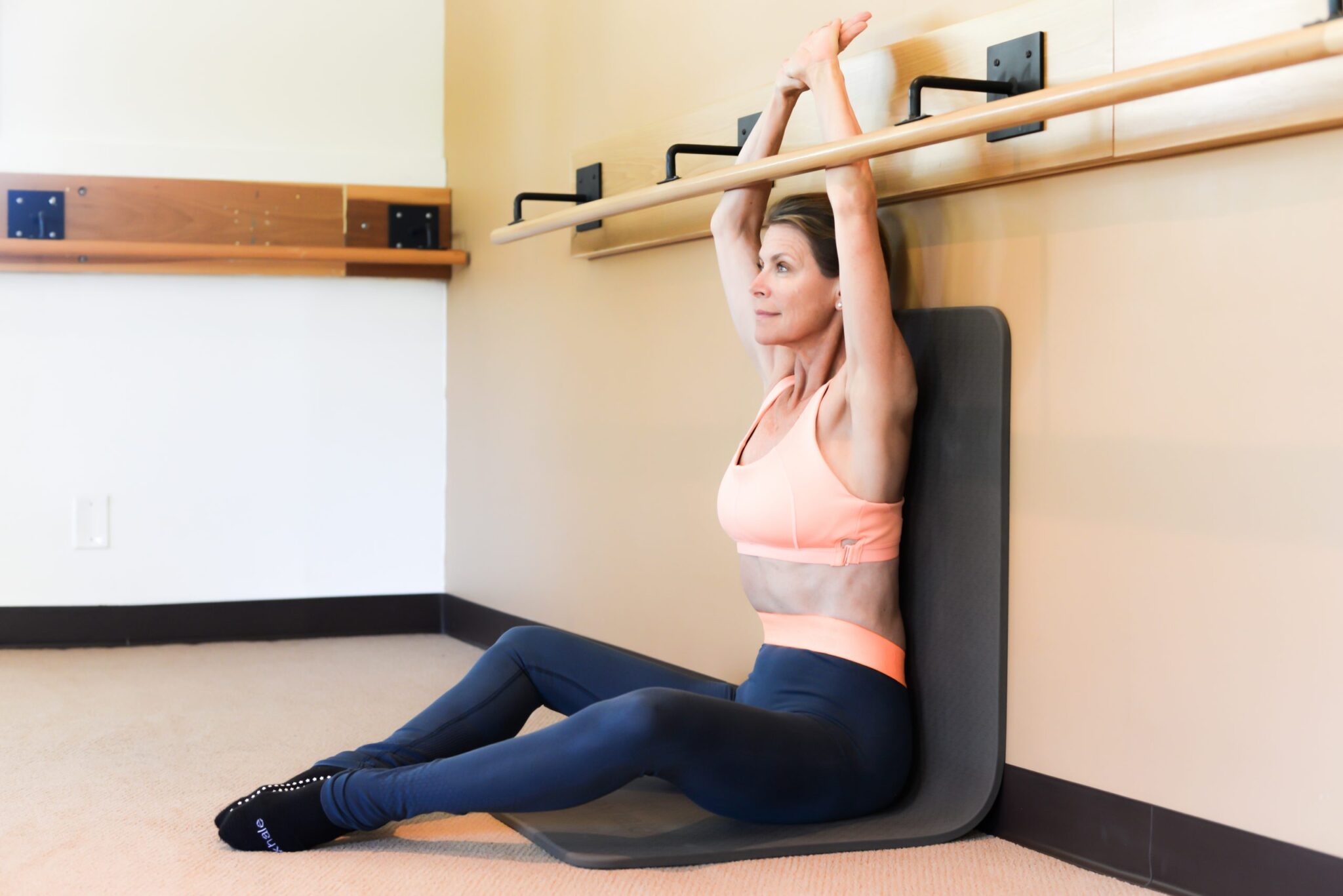FLAT BACK: THE MOST MISUNDERSTOOD BARRE EXERCISE AND WHY IT’S YOUR CORE’S BEST FRIEND

Flat Back is an old-school exercise: it has roots with Lotte Berk, the founder of the Barre technique back in the ‘60’s. It has been a staple in core conditioning exercises for barre classes ever since.
There are so many benefits of mastering the Flat Back position. It’s a results-oriented, efficient exercise with real results that keep students returning to the barre: a leaner waistline and a stronger core. If you can master this position, it’ll improve your performance in every other exercise in the class, as well as your posture, strength, and balance in the studio and out.
In Flat Back, you press your back into the wall and brace it there, as the internal contraction of your Transversus Abdominis fires up your core. This contraction is one of compression, or “pulling in” and sustaining that energy while the legs move in various combinations under the brace. Using the weight of the legs to challenge the core, flat back is often thought of as a seated plank position and is a typical exercise used by gymnasts for all “L” seat type moves in a routine.
Of all the exercises in a barre class, this one is the most easily misunderstood – especially if you’ve never been challenged to “pull in” the abdominal wall.
In flat back, if you’re using incorrect muscles, you’ll strain to keep your legs off the floor. If you have a cycling or running routine without a balance of flexibility, be sure you’re not overusing your hip flexor muscles (those powerhouse muscles in front of your hips) to lift your legs in flat back position. To get the full benefit of this exercise, it must come from deep in your core.
The more your abdominals are pulled in and shoulders are pressing down, the more effective flat back is going to be. And if your legs don’t leave the floor, that’s okay – you’re still going to see results from the press up, pull in motion. So don’t let your ego to get in the way if your legs do not come off the floor just yet.
Throughout a barre class at exhale, there is a clear through line for strengthening your core: from the plank position in the beginning of class to the core conditioning series of Flat Back, Round Back and Curl at the end of the class. Here’s what all these exercises have in common: you’re pulling in the abdominals and bracing correctly – which will improve your performance in all of the other exercises in class. This is what makes Flat Back of the staple core conditioning exercise positions in your arsenal – and why it’s important to master.
After a few decades in the barre industry, and more Flat Backs than I can count, here’s what I’ve learned over the course of my career: you do not get a stronger core by doing large numbers of crunches. Here’s why: crunches will work your superficial abdominal muscles, Rectus Abdominis and internal/external oblique, but without proper technique in breathing and muscle activation, your actual core strength challenges are missing.
In an exhale barre class, all those small curl movements in our abdominal work will challenge those superficial abdominal muscles — but to really see the results you want, you’ve got to access the deep Transverse Abdominis muscle. Results are all about the Flat Back and that press down, pull in motion. Once you’ve mastered that, you’re a true barre aficionado.

